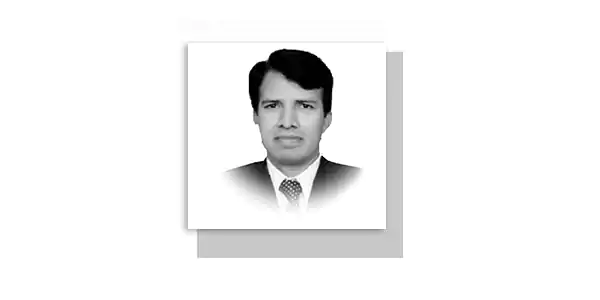ARTICLE 1 of the Resolution adopted at the meeting of the United Nations Commission for India and Pakistan (UNCIP) on 5 January 1949 states, “The question of the accession of the State of Jammu and Kashmir to India or Pakistan will be decided through the democratic method of a free and impartial plebiscite”. Nevertheless, plebiscite could not be held despite passage of seventy-five years of this UNCIP Resolution. For decades, India has been misleading the world that Pakistan did not withdraw its forces from Jammu and Kashmir as demanded by UNCIP resolutions; therefore, a plebiscite could not be held. This factually incorrect and misleading Indian assertion aims to cover up its reluctance to hold the plebiscite in the disputed state. Indeed, two resolutions were passed by UNCIP which forms the basis for conduct of Plebiscite in Jammu and Kashmir. These resolutions were adopted by UNCIP on 13 August 1948 and 5 January 1949 respectively.
These resolutions outlined the detailed procedure for the organization and conduct of the plebiscite in the state of Jammu and Kashmir. The UNCIP resolution of 13 August1948 called for the withdrawal of Pakistani forces from the state of Jammu and Kashmir. Pakistan however, raised a query over the unilateral pull-out of the Pakistani forces, describing the uncertain situation in the state, since it was a temporary ceasefire. Therefore, Pakistan approached the UN Security Council for the reconciliation as far as the presence of forces on both sides of the ceasefire line was concerned. The Pakistani request for the reconciliation was debated and approved through United Nations Security Council Resolution (UNSC) Number-98. It was adopted on 23 December 1952. As per this resolution, a new force level for the maintenance of law and order on either side of the ceasefire was established. The UNSC resolution proposed a certain number of troops on either side of the ceasefire line.
As proposed by UNSC Resolution No-98, UN authorized 3000-6000 forces from Azad Kashmir Regular Forces Azad and 3500 troops from the Gilgit and Northern Area Scouts for the security purposes along the ceasefire line on Pakistani side and 18000-24000 security forces along with 6000 local state forces (ex Dogra forces) for the security purposes in Indian occupied Kashmir. UNSC urged the Governments of India and Pakistan to enter into an immediate negotiation under the auspices of the United Nations Representative for India and Pakistan in order to reach an agreement on the proposed number of troops on either side of cease-fire line at the end of the previously established period of demilitarization. It was a unanimously adopted resolution without any opposition, though Pakistan demanded an equal number of troops on both sides. This UNSC (S-2883) entitled India-Pakistan Question while thanking the UN Representative for his efforts and also asked India and Pakistan for compliance within 30 days after the adoption of this resolution. UNSC also asked the UN Representative to keep the Council informed about the progress.
Unfortunately, India kept delaying implementation of UNSC resolution-98, since it never wanted to hold the plebiscite in the state. The main character of this entire episode was Pandit Jawaharlal Nehru and Sheikh Muhammad Abdullah, the Kashmiri Prime Minister of Indian occupied Kashmir. According to A.G. Noorani, the famous Indian writer, on 8 August 1953 Sheikh Abdullah was sacked from the office of Prime Minister of Indian occupied Jammu and Kashmir and put behind the bars along with some colleagues. The Nehru-Abdullah rift marked a turning point in the history of Kashmir. It is said that, Nehru was constantly pressurizing Abdullah to finalise the accession of Kashmir with the Indian Union, which the latter was reluctant to do. Another reason was the Jan Sangh-supported agitation in Jammu province of Kashmir state.
Under pressure Sh Abdullah came clear against Nehru on 10 April 1952 at his famous speech at Ranbirsinghpura. He said, “Kashmir’s accession to India would have to be of a restricted nature as the communal spirit still existed in India. He further said, “So far as Kashmir was concerned, it wanted to preach the mission of secular democracy, both to India and Pakistan.” Nehru took note of Abdullah’s speech. However, later, there was a temporary phase of reconciliation, the way Nehru wanted. On 24 July1952, Nehru and Abdullah concluded the famous Delhi Agreement on Kashmir’s closer integration with the Indian Union. The relationship between the two however, remained tense and unfriendly until the dismissal of Sheikh Muhammad Abdullah.
Through dismissal of Sheikh Abdullah and other measures, Nehru was delaying the plebiscite in the state of Kashmir. He however, was careful too since UNSC resolution 91 of 30 March 1951 did not allow accession of the state with the Indian Union. This resolution reminded the governments and authorities that the final disposition of the state will be as per United Nations Commission for India and Pakistan resolutions of 13 August, 1948, and 5 January 1949. It will be in accordance with the will of the people expressed through the democratic method of a free and impartial plebiscite, conducted under the auspices of the United Nations. Indeed, this resolution came in order to stop the All Jammu and Kashmir National Conference from any attempt to decide the future of Kashmir in the favour of India. This resolution was reiterated by another UNSC resolution on 24 January 1957.
Indeed, India never wanted a plebiscite in Kashmir due to obvious reasons that Kashmiris will never vote for India. The Nehru strategy of annexing Indian occupied Jammu and Kashmir with India was implemented by Hindu National Prime Minister Modi on 5 August 2019. It was a gradual process where Indian elites were looking for an opportunity for the forceful annexation of Jammu and Kashmir with Indian union. The role of the United Nations and international community has been found wanting in these entire seventy-five years after the passage of the UNCIP resolution on 5 January 1949.
— The writer is Professor of Politics and IR at International Islamic University, Islamabad.
(drmkedu@gmail.com)










